In my original route plans for the World2 Tour, the final section was always going to take place around the Western Pacific, and I was expecting to hit that region hard. My reasons for that included the simple fact that there are some famously beautiful places in that part of the World. However, there was also a significant amount of the might-as-well phenomenon in play. Whereby, while planning a long tour, one says to themselves, if I’ve already covered such a great distance, I might as well add those nearby Islands, too, since I probably will never have another opportunity.
In my case, that resulted in Fiji being the final country added to my route, but not the actual end of the route, though there was also one additional reason, which I will mention in another post. Of course, like many of its island-nation neighbors, Fiji closed up tight shortly after the outbreak of the 2020 pandemic, with little apparent chance that I would be able to get there, a situation that made me feel seriously disappointed.
As it turned out, there was one advantage to all the lengthy delays caused by the many mishaps I underwent in 2021, and that was that, just when I had arrived in Palau, Fiji decided to reopen their borders to vaccinated travelers. That wasn’t scheduled to happen until the first of December, however, and that is, in addition to the frequently-changing flight schedules during the early reopening period, and the extra disruptions caused by the recently-evolved Omicron Variant, what caused me to stay in beautiful Palau for an extra two and a half weeks, a circumstance that I couldn’t really complain about in any significant manner. Though I had long given up hope, I would therefore finally be able to visit one of the major destinations that I had planned for the latter days of the Tour and, flight chaos and rerouting notwithstanding, it felt good. As a country that derives most of its export income from tourism, Fiji had been hit hard by the lengthy closures, and, as a country, was also quite happy to welcome international visitors back. Presumably they were particularly happy with me, because, before all was said and done, once again I stayed longer, and spent more money there, than I had originally intended.
The entry procedures were similar to Palau, and generally of the type that made the most sense at the time. Visitors needed PCR tests before departure, proof of vaccination, and were expected to loosely isolate for two days at a certified hotel, after which an Antigen test would be given. However, there was one additional requirement that almost derailed the whole endeavor. Arrivals were also expected to take special registered transportation from the airport to their hotels. When I made my booking online there was no way to request that service, so I assumed that it would either be waiting for me at the airport, or that I would be able to go on my own, since I had my own vehicle with me. When you think about it, the latter option was best all around, since if I had actually been contagious at the time the driver would likely get infected, whereas if I went alone, by cycling, no one else would be at risk. However, the third-party check-in crew at the Honolulu airport was not going to let anyone board without proof of pre-arranged transport. Fortunately, another passenger was kind enough to let me borrow his phone to call the hotel. They said they had experienced the same issue previously and sent me an e-mail stating that my room and transportation were already booked (even though the transport part was untrue.) That seemed to satisfy the airline, and soon I was finally on my way. Upon arrival, there were no major issues, and since it was still early in the morning, so not very hot yet, I followed my preferred practice and reassembled the bike outside the terminal and, after being slightly questioned about that just once, soon slipped out and began the rather easy twenty-three kilometer ride to the hotel, without incident. It does help if the ride away from an airport doesn’t exhibit the usual clog of traffic, but instead occasionally provides views like the one shown below.
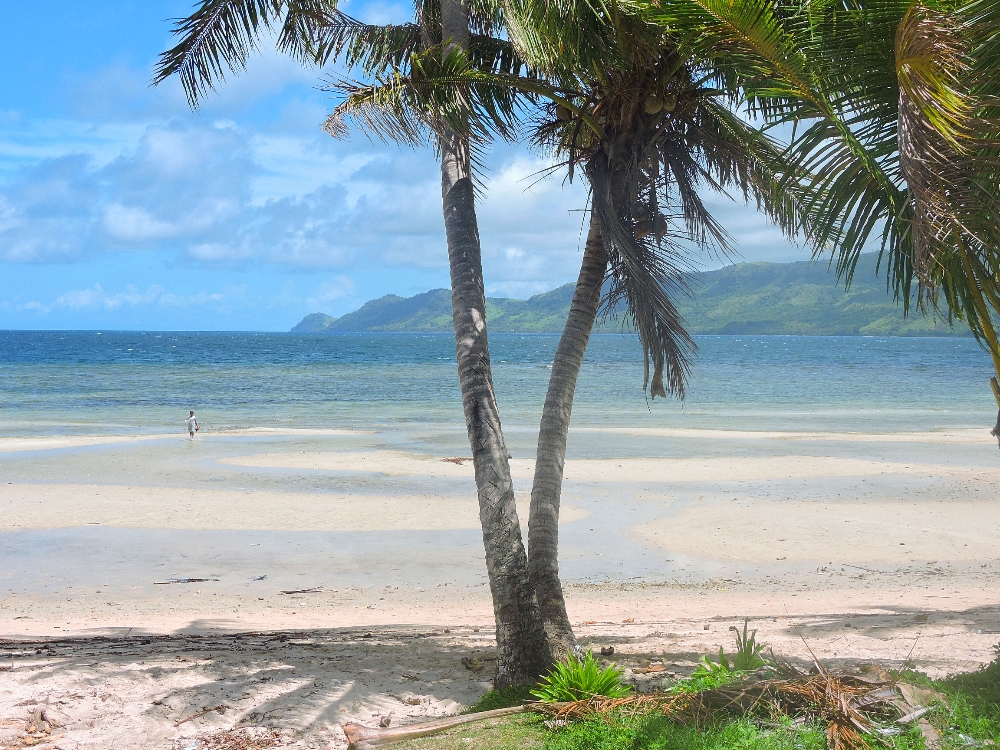
Fiji is, as you might imagine, is an especially pleasant country to visit, and while it doesn’t really appear well-designed for a long cycling tour, it can certainly be a fun destination for that as well. Geographically, the numerous islands are just what you would expect from the South Pacific, heavily eroded extinct volcanoes, lush and green, and encircled by turquoise, reef-edged lagoons. Most of the people of the islands have the heritage of the original Melanesian inhabitants, but there is also a large fraction that can trace their ancestry back to the South Asians brought to the islands by the British to be indentured laborers on sugar plantations. Today that results in an interesting and friendly, English-speaking, blend that notably affects the types of foods that are usually available. While authentic Indian food didn’t seem to be very common, pork was totally absent and beef was rather scarce. Most of the population lives on the largest island, Viti Levu, and, consequently, that is where all of the larger towns are located and so also where most of the traffic is to be found. That traffic was usually not too bad and, like me, was primarily confined to the one main road that encircles Viti Levu. Sometimes its surface was good, while in other places a little bumpy. Sometimes the sights along the roadside appeared rather ordinary, while, occasionally, they looked like this.
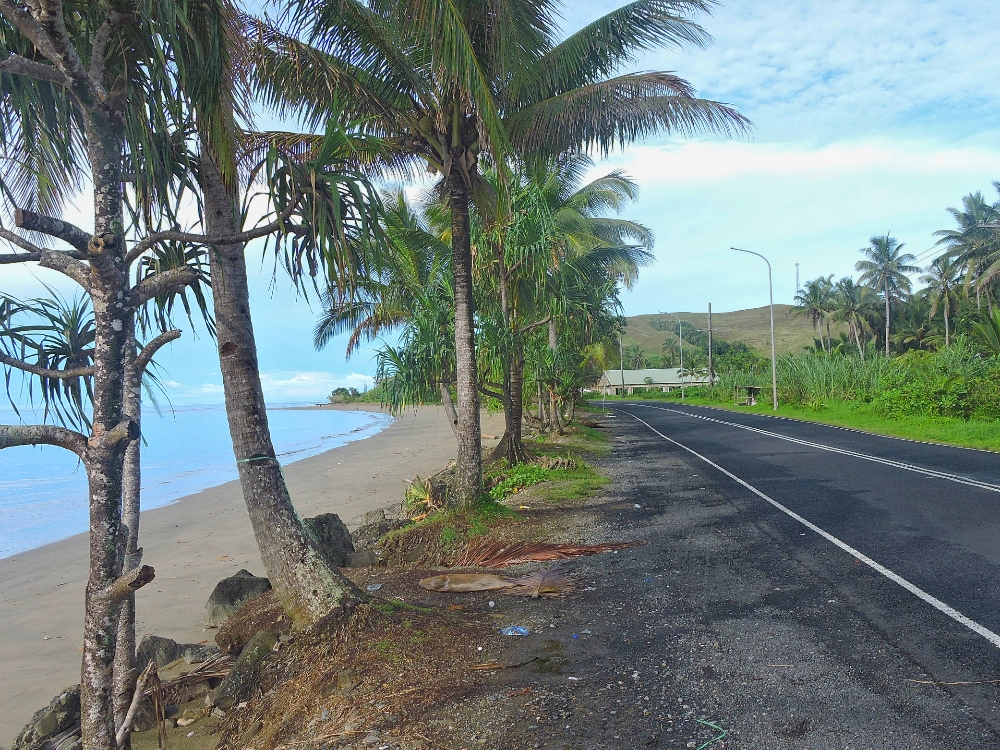
After my unsurprisingly negative Antigen test, I was finally able to start this short section of the Tour. It had been over four months since my Tour actually resembled a tour, whereby I would normally move to a new place every day, and it felt good to finally be in that mode again. However, even though I expected that it would be tough to get started again, and shortened my intended daily distances accordingly, I was still a little surprised by how little my limited rehab rides in Palau had apparently accomplished. While I completed the first few short days without any real difficulty, my pace and endurance seemed similar to what I remember from when I was twelve years old. That came into play more significantly shortly later when I got to the one slightly long section, only a measly one hundred kilometers, of the route on the east side of Viti Levu. Earlier in the Tour I wouldn’t have even blinked at a daily distance like that, but at the time I was motivated to split that in two and then try to find a camping spot halfway, due to a lack of accommodations, something I hadn’t done in a long time. However, while I started out on that plan I soon felt like that was even too ambitious, primarily because the usual afternoon thunderstorms that normally cooled things down significantly didn’t materialize that day. Consequently, I decided to abandon the rest of those two days and skipped forward using local transport. In years past, doing something like that would have felt akin to failure, but at this point in my touring career it no longer seemed to matter very much. And that may have been for the best, since along the way I observed that sections of that road were quite bumpy and also that I probably would not been able to find a suitable place to camp at the midway point.
An additional reason that I didn’t mind skipping forward a little was that I had already made room reservations on another island for one day later. I intended to visit four of the many islands that make up the country, though cycling possibilities would be limited on the other three. One thing that surprised me about Fiji was that, for an archipelago nation, there were noticeably few boats around. Some were seen here and there, of course, but nothing like the numbers one would find in other coastal or island countries, even in places like lightly-populated Palau. Normally, when moving around an archipelago I would always prefer to transfer between islands by ferry, for many reasons, but especially because it is so much easier to transport the bike that way. And, while there are ferries from a handful of private companies moving between the inhabited islands in Fiji, the general non-boatiness of the country seems to extend to that transportation option as well. For nobody seems to know exactly when any particular ferry will be sailing any particular route, and this also extends to the ferry company Web sites. Only at the actual docks would a schedule be occasionally seen.
For my first journey to a different island I was going to Ovalau, a very small island close to Viti Levu and the location of the historic town of Levuka. After skipping forward, no one in the nearest large town could tell me what time the ferry would depart the following day. The manager of the only hotel there called someone for me and we came to the conclusion that one from a particular company would be sailing at 2:00 PM. That was good for me, as I could then sleep late and still have plenty of time to ride the eighteen kilometers to the port. Nevertheless, I chose to give myself plenty of time and left in order to reach the dock at noon. That was fortunate, because when I arrived I quickly learned that the ferry I wanted had actually left at 8:00 AM. Thankfully there was another, more cargo-oriented ferry sitting at the dock and I was able to catch that one with just minutes to spare. Finally, I was on my way to Ovalau, and was able to enjoy what turned out to be a particularly beautiful and scenic crossing.
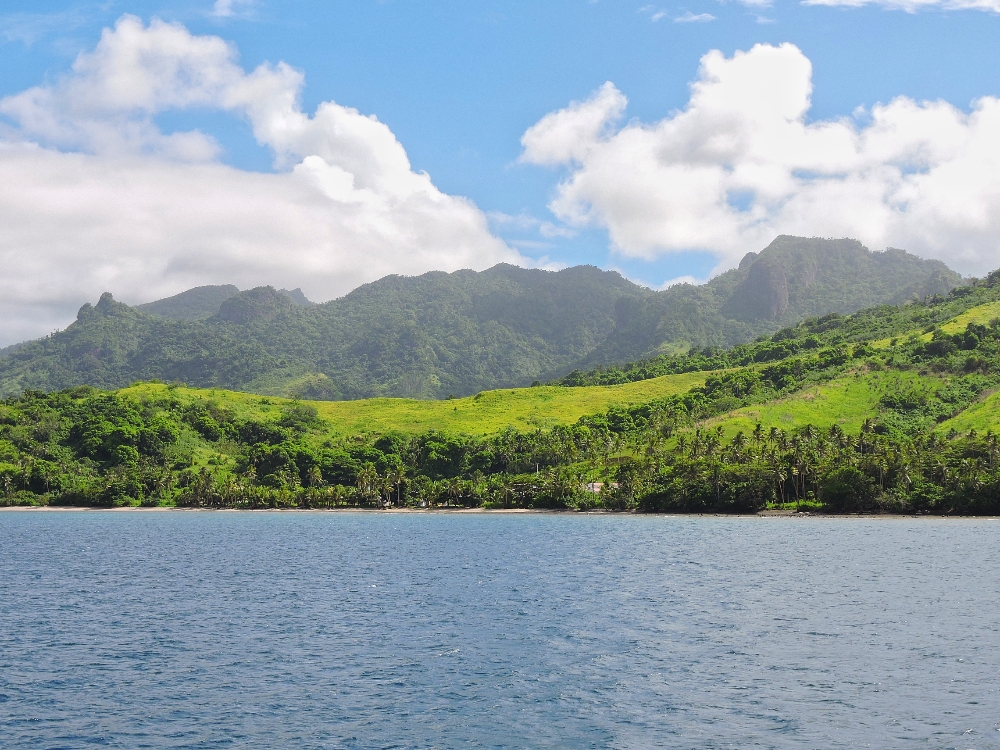
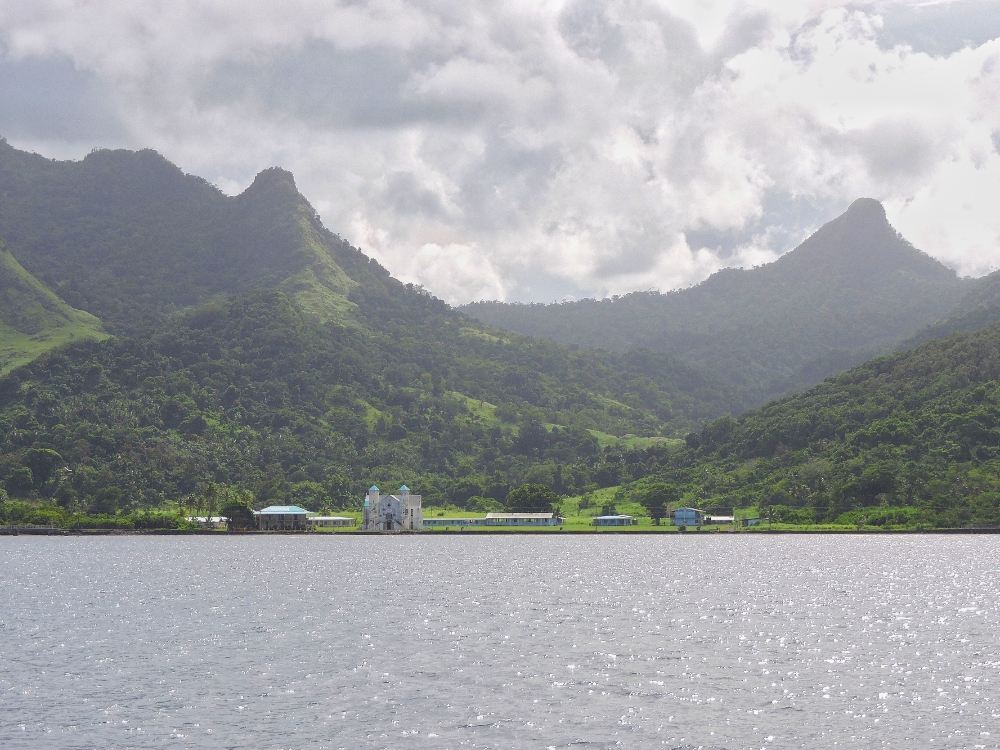
The other two islands I intended to see are located considerably farther away from Viti Levu than Ovalau is and, though they both have ferries serving them, the journeys are longer and the schedules are presumably just as unreliable, so with what I thought was limited time available I, somewhat regrettably, chose to get to each of those using small domestic flights. The first was Taveuni, known as the Garden Island
of Fiji, and in that case I went through the effort and expense to bring the bike along. Taveuni was probably my favorite location in Fiji, and it got of to a good start when the airport and the village where I stayed was called Matei
which, as I mentioned in another post, long ago, was the name of my grandfather, Mihail Matei.
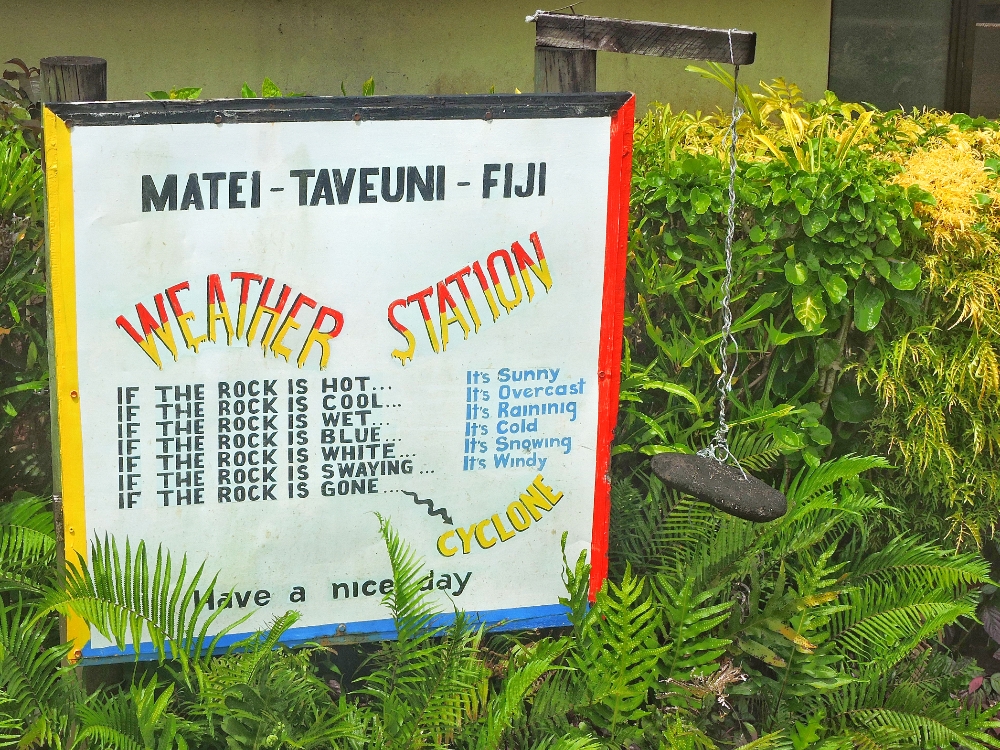
I spent most of the December holiday week there, for the third Christmas in a row that I would spend fairly close to the Equator. Taveuni has a circular road that is paved for half of the western side, and reasonably good gravel everywhere else. I did two moderate rides along each side, and that was when I finally started to feel my cycling form beginning to return, just a little.
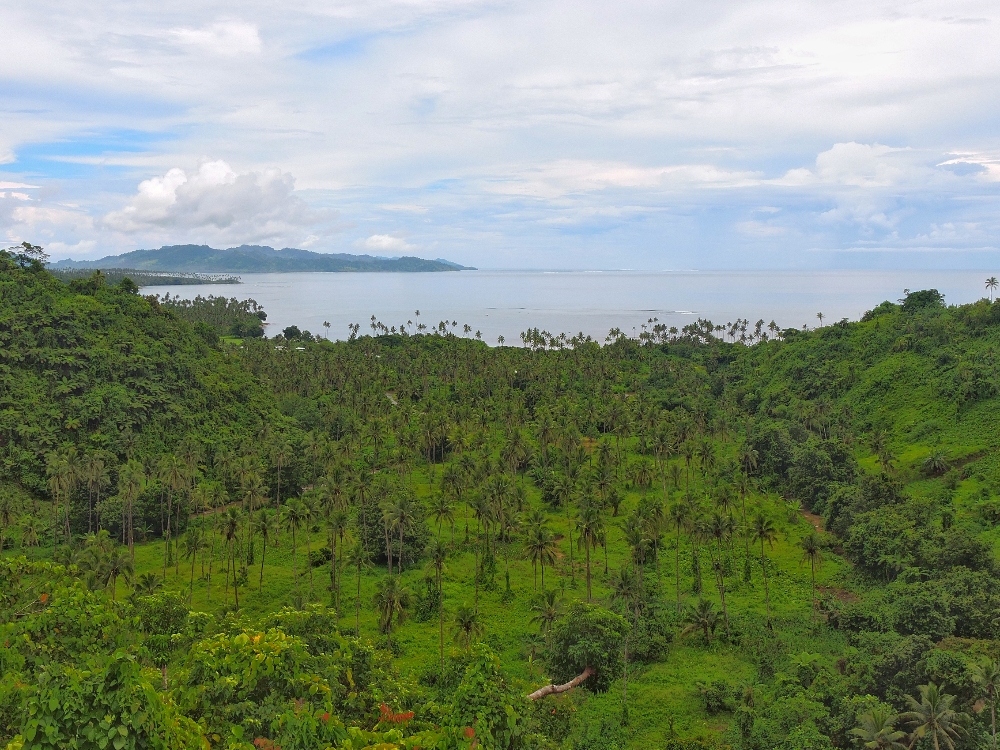
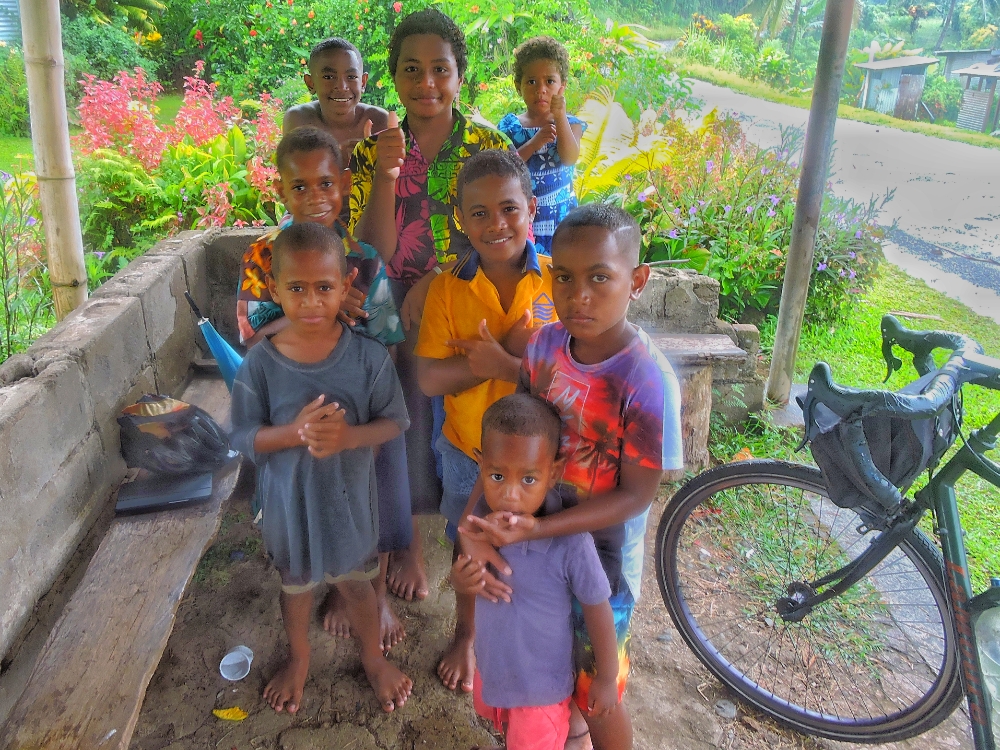
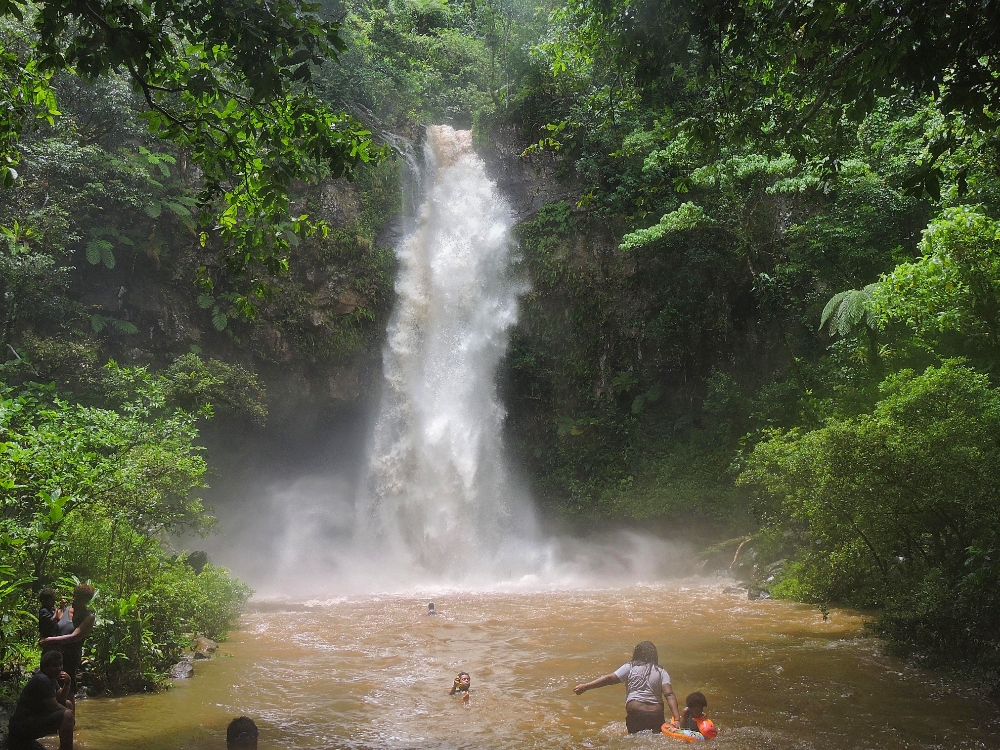
My final island in Fiji was Kadavu, a good birding spot, but a lightly-populated place with only one gravel road that doesn’t go anywhere particularly useful. Consequently, after riding around the southern side of Viti Levu to Nadi, where the main airport is located, I left the bike behind, ready for my upcoming departure, and made a quick visit there, though only seeing half of the birds I was seeking. I probably should have taken the bike along and stayed longer, because any return to fitness I had achieved over the previous weeks would soon dribble away again.
My next destination had few flight options available to reach its territory, and the only one that would be remotely practical for me involved a short layover in Sydney. Australia had long been closed tight with some of the most restrictive border policies seen anywhere. However, at the time, vaccinated people had recently been allowed to transit through Sydney and a few other airports again, under certain circumstances. That would work for me, but the short version of the story is that, due to the vagueness of some of the information put out by the relevant authorities, my paperwork was not deemed to be adequate, and I was denied boarding at the airport in Fiji, twice. With only one connecting flight to my next destination each week, that meant that I ended up spending two extra, and unproductive, weeks in Fiji. There are worse places to be stranded, of course, but the first week was affected by the close passage of Cyclone Cody, which didn’t make landfall, but dumped an excessive amount of rain over several days. The second week was drier, but flights were again in doubt as the major volcanic eruption on Tonga occurred during that time. Surprisingly, no one in Fiji seemed particularly concerned about the tsunami risk, and, in reality, the effects on Fiji were amazingly light. Eventually, much to my relief, my documents appeared to finally be in order. I had finally made it to one of my anticipated destinations from the end of the Tour, and, though I took a step back in my fitness because of the extra delays, I was then able to move on again. Finally.